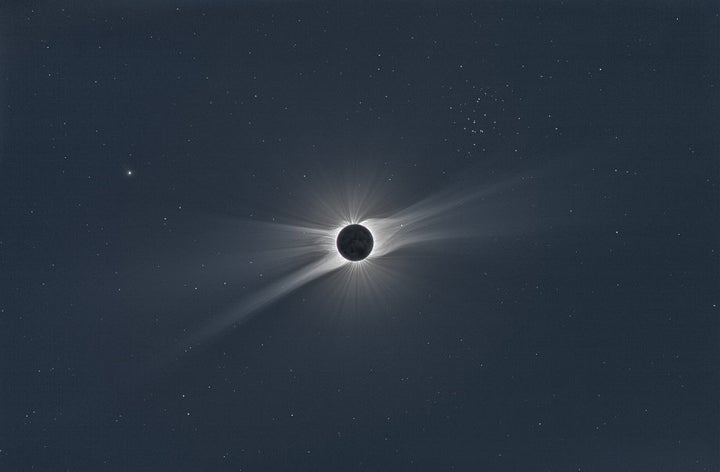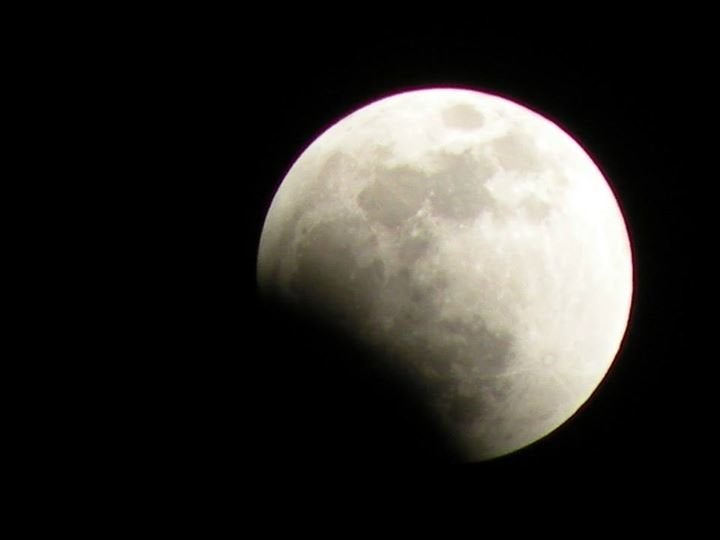
Millions of Americans will get the rare opportunity next summer to experience a total solar eclipse.
On August 21, 2017, the moon will pass in front of the sun and its shadow will sweep across the contiguous U.S., crossing 14 states from Oregon to South Carolina.
Total solar eclipses aren’t especially rare, despite what many people think. One occurs somewhere on Earth every 18 months on average, according to Sky & Telescope.
But this will be the first one since February 1979 ― back when Jimmy Carter was in the White House and Rod Stewart’s “Do Ya Think I’m Sexy” was atop the music charts ― to be visible in the lower 48 states. It will be the first total solar eclipse in 99 years to sweep from coast to coast.
The next total solar eclipse won’t come our way again until 2024.
So this could be your best opportunity to see firsthand a celestial event so sublime that it’s been called “one of the most awe-inspiring spectacles in all of nature” and has been known to produce profound psychological effects in observers.
“It will be the most spectacular thing that anybody has ever seen,” Dr. Jay Pasachoff, an astronomer at Williams College and witness to 33 total solar eclipses, told The Huffington Post. “We try to tell people that in advance, but when they to see one they are still absolutely amazed. People cheer. People cry. It’s just absolutely spectacular.”
The eclipse will actually be visible across all of North America and parts of South America. But most people in these areas will see only a partial eclipse. Only people within a band that averages about 68 miles wide will be treated to the total eclipse (click on interactive map below to see the band in detail).
Twelve million people live directly in this band, according to Space.com. All they have to do to see “totality” ― the brief span of time during which the moon obscures the sun completely ― will be to look up. About 200 million people live within a one-day drive of the band.
Just what is it like to witness a total solar eclipse?
As the moon starts to cover the sun, its light ebbs. As totality nears, the sky goes from twilight blue to bluish-black. Bright stars and planets suddenly become visible. The temperature may drop by as much as 20 degrees. Confused by the sudden darkness, animals may prepare for sleep.
Then the special moment arrives. Here’s how one 1878 astronomy text (cited on the U.S. Naval Observatory website) described the arrival of totality:
“As the last ray of sunlight vanishes, a scene of unexampled beauty, grandeur, and impressiveness breaks upon the view. The globe of the moon, black as ink, is seen as if it were hanging in mid-air, surrounded by a crown of soft, silvery light, like that which the old painters used to depict around the heads of saints. Besides this “corona,” tongues of rose-colored flame of the most fantastic forms shoot out from various points around the edge of the lunar disk.”
In the August 2017 eclipse, the moon’s shadow will first kiss the Earth’s surface in the Pacific Ocean about 1,500 miles northwest of the Hawaiian islands and then rush headlong toward North America, according to Space.com.
The shadow will make landfall in Oregon and then pass over Idaho, Montana, Wyoming, Nebraska, Iowa, Kansas, Missouri, Illinois, Kentucky, Tennessee, North Carolina, Georgia, and South Carolina before heading out into the Atlantic Ocean, according to Sky & Telescope.
The moon’s shadow will move across the ground at speeds well in excess of one thousand miles an hour. That means the totality at any given place won’t last very long. At the point of its greatest duration, a spot in southern Illinois, the sun will be fully obscured for about 2 minutes and 40 seconds.
But as Pasachoff explained, that’s plenty of time to enjoy the spectacle.
A good view of the eclipse can be had at any point along its path. Since skies in August tend to be clearer in the western U.S., however, many eclipse watchers will probably head that way. (Pasachoff plans to view the eclipse from Salem, Oregon.)
In any case, experts recommend checking weather forecasts a day or two ahead of time and then picking a place with a good chance of a cloudless day. You can use this form to check whether and at what time totality will be visible for any particular city.
Before and after totality, you’ll need to view the eclipse through a special filter to protect your eyes. During totality, when the sun has vanished, it’s safe to view the eclipse without the filter ― but it’s important to know exactly when the moment begins and ends.
Happy viewing!

